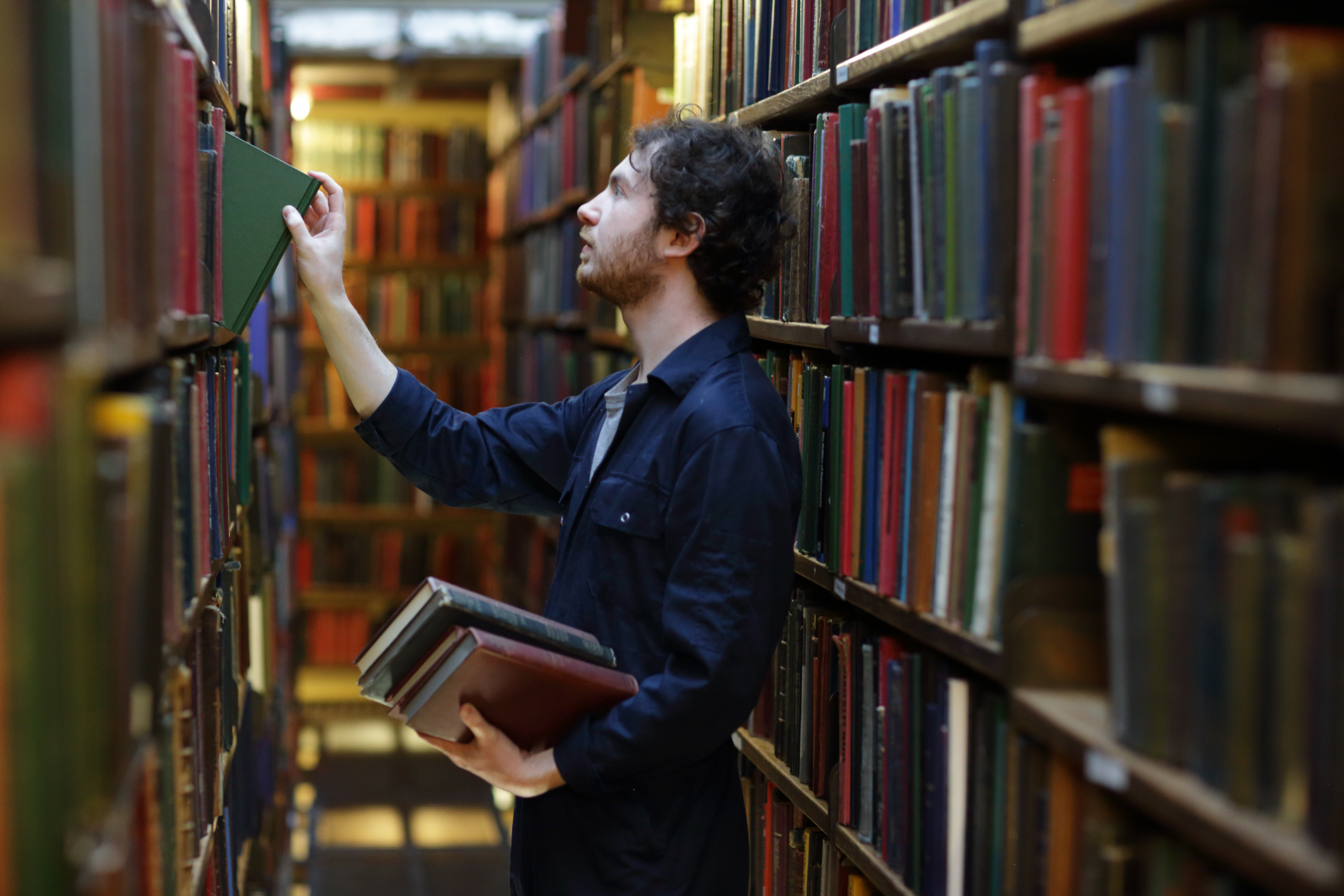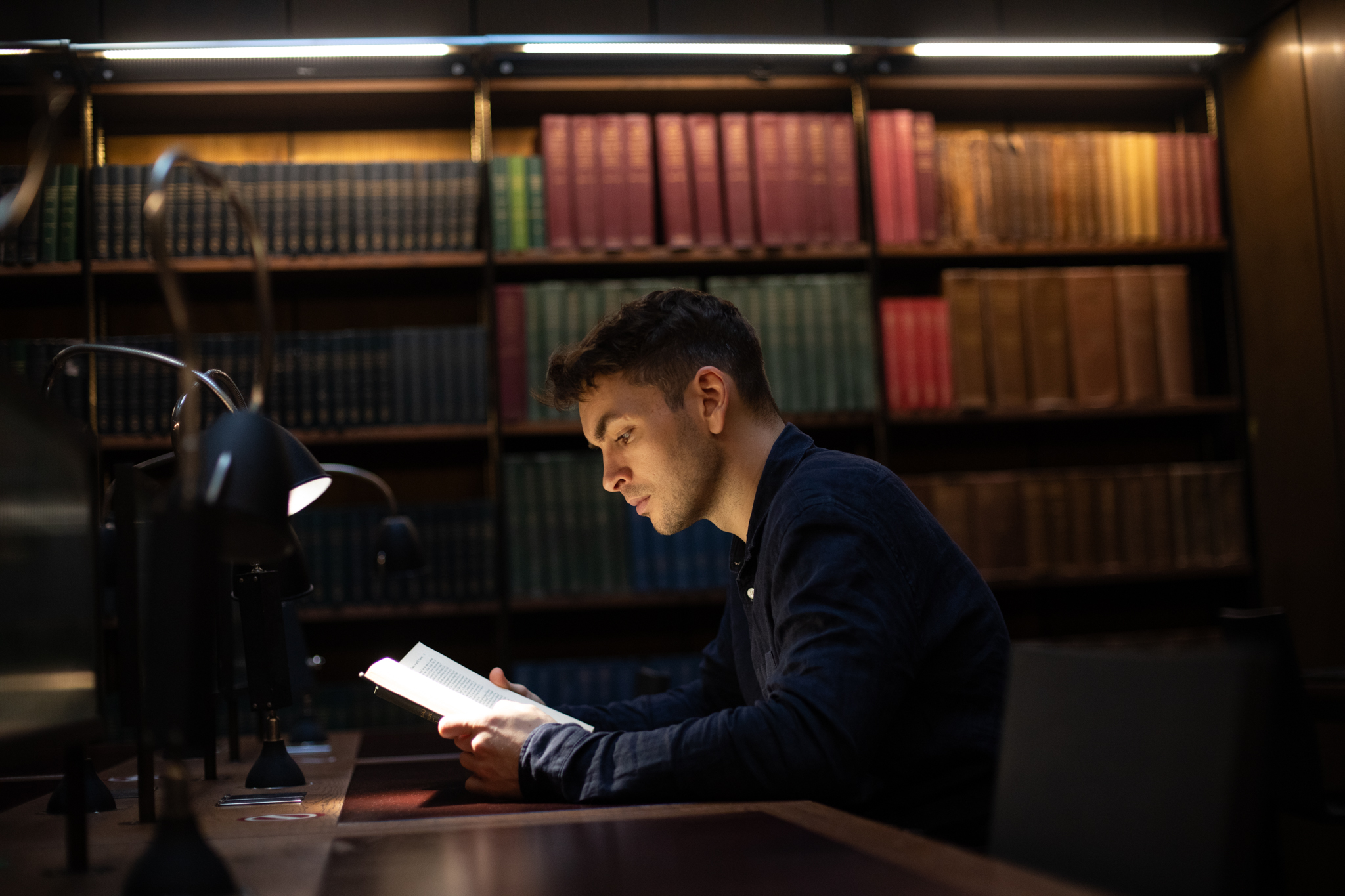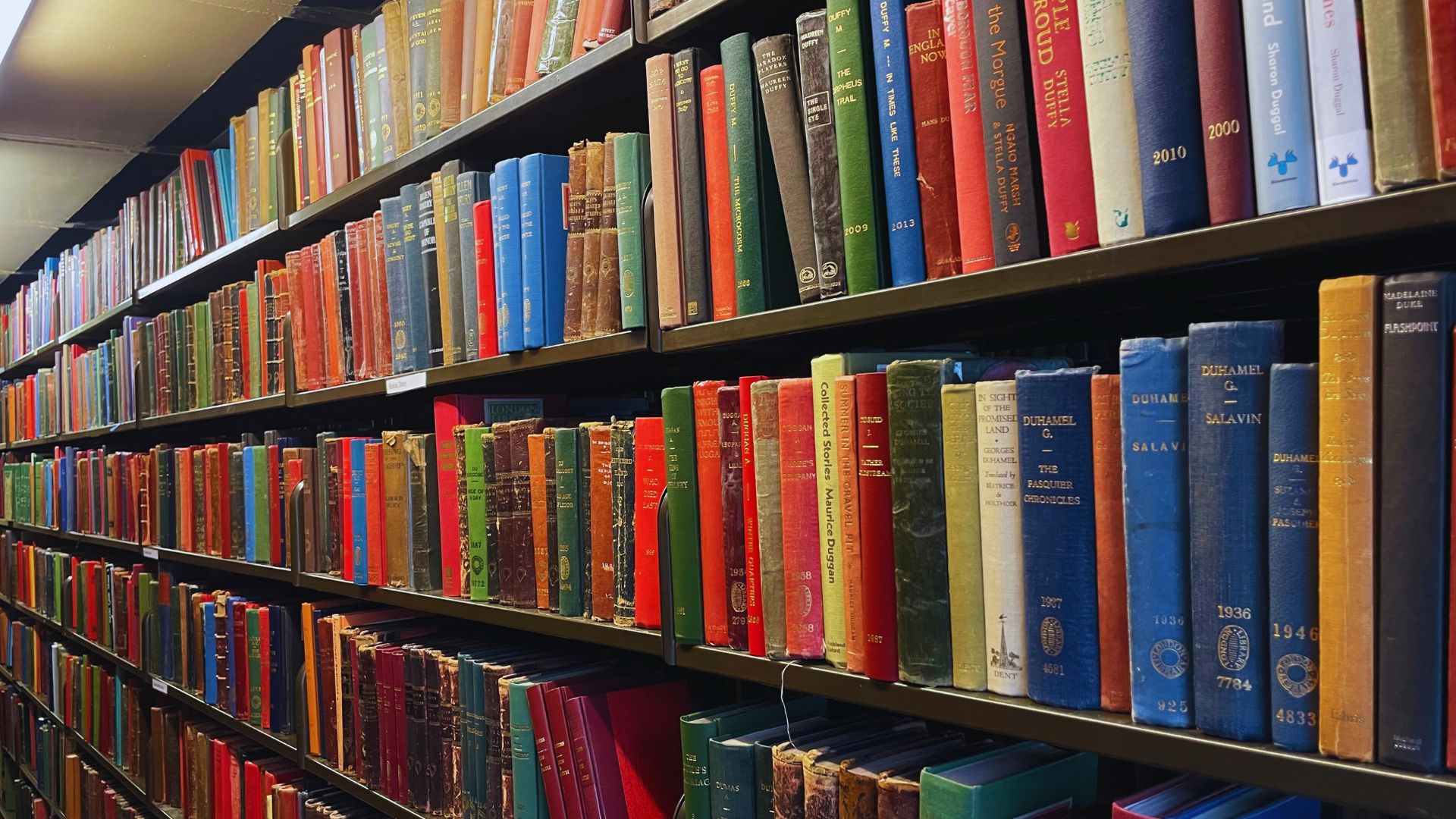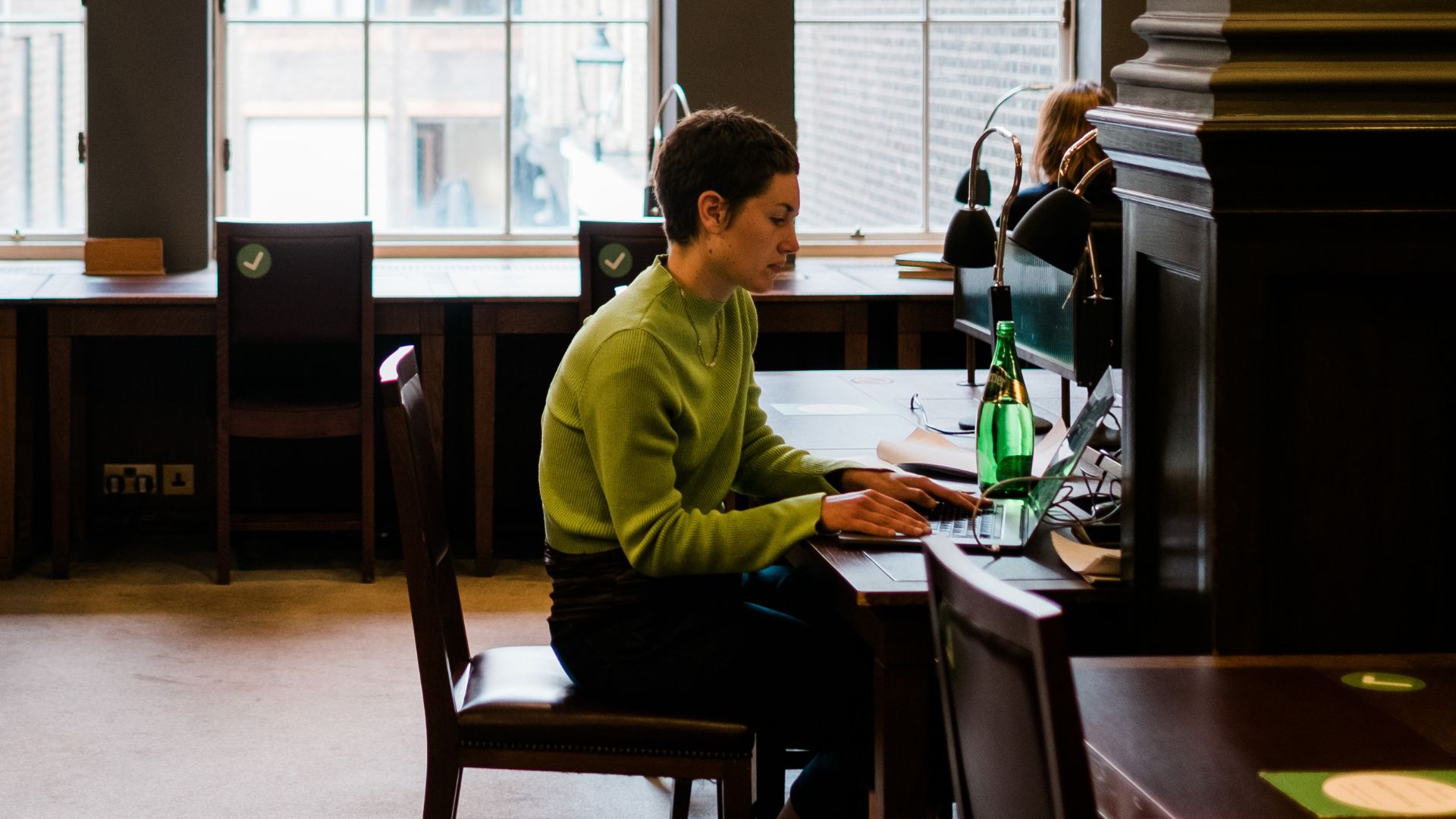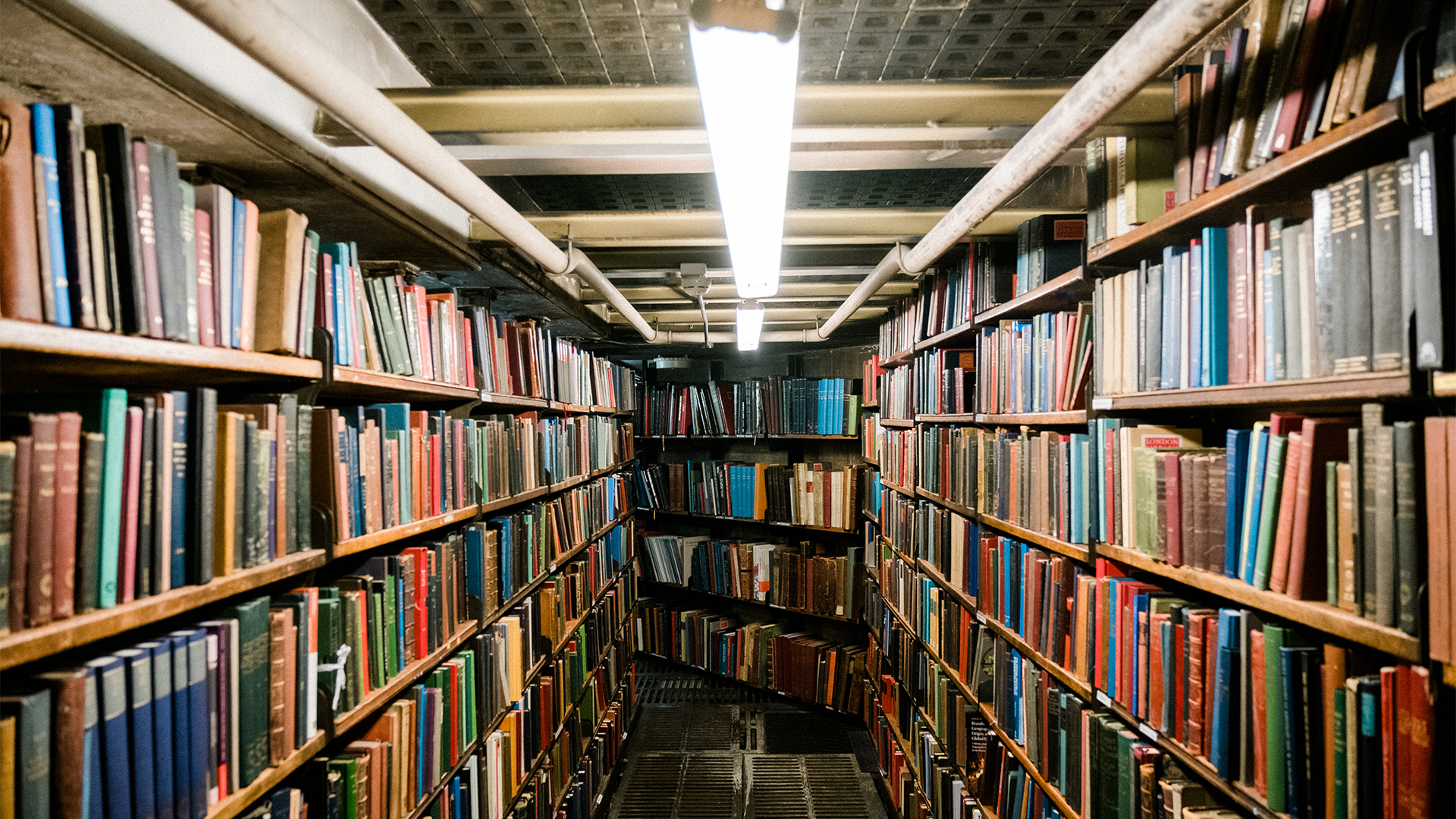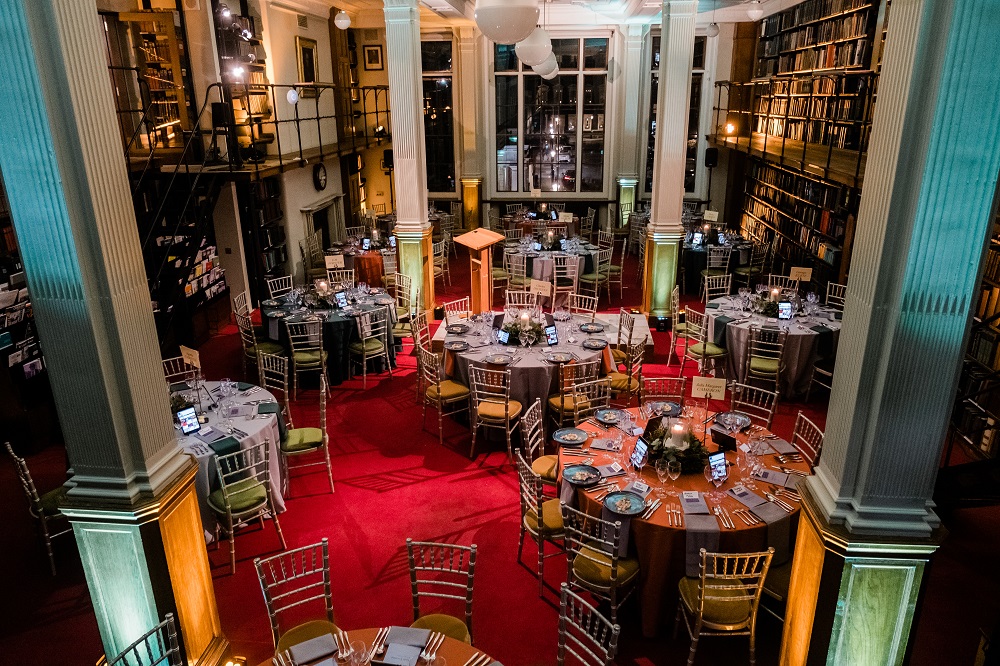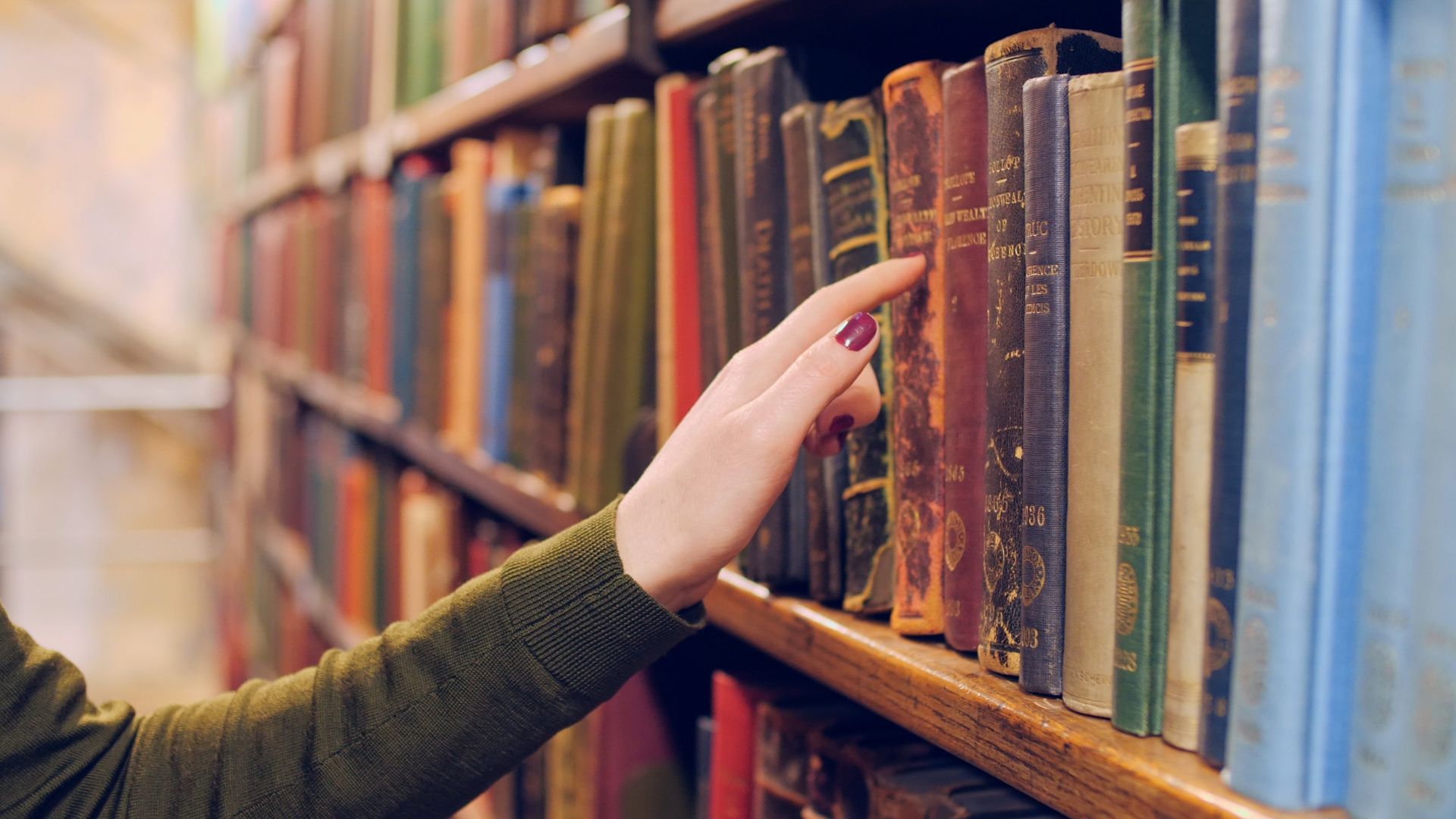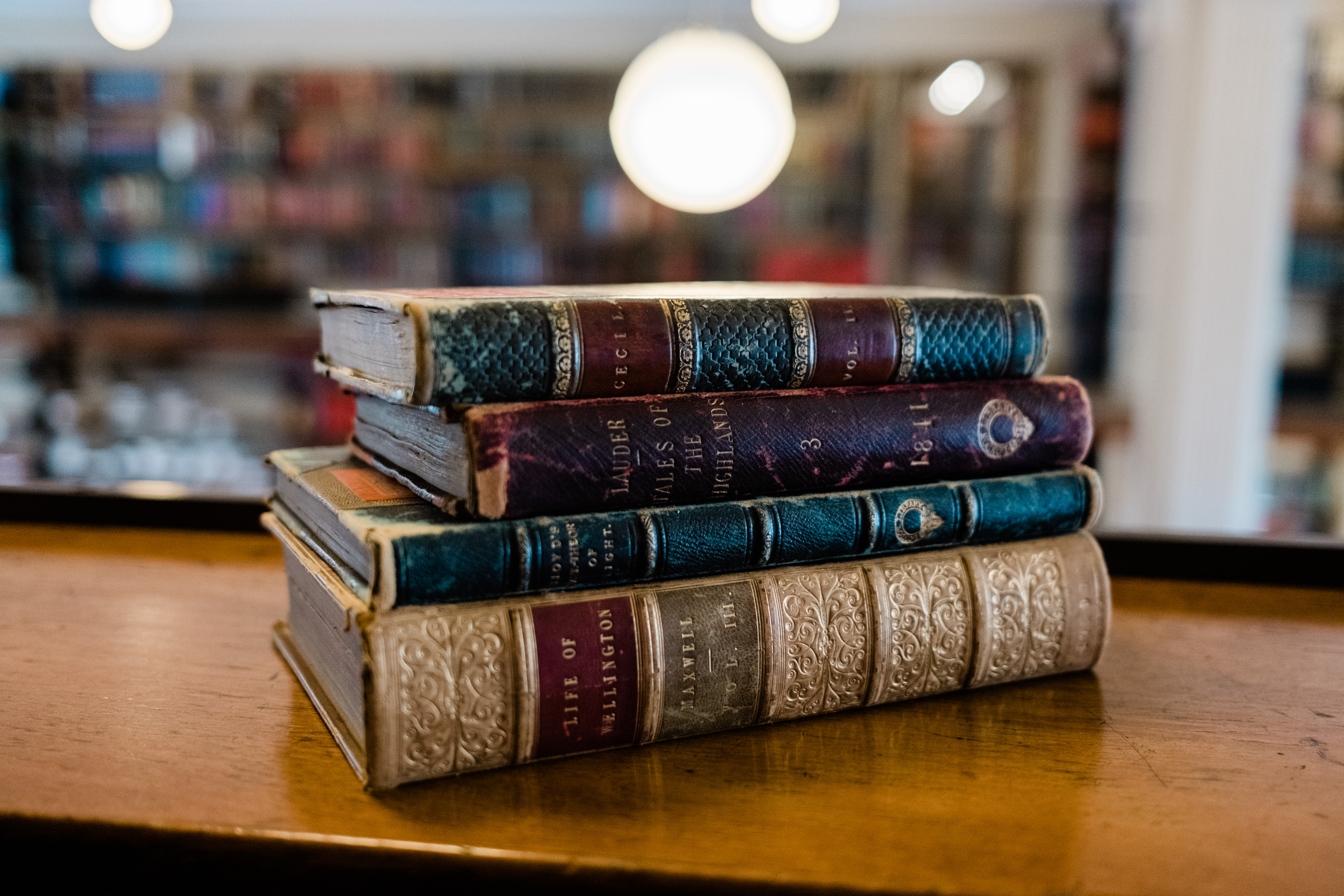On the night of 23 February 1944 enemy planes flew over St James’s and dropped a deadly cargo of high-explosive bombs. Four landed between Jermyn Street and Pall Mall, with one hitting the London Library’s north-west wing. The Library lost four floors of its 1930s stacks and the blast affected many of the library’s most iconic spaces, including the Art Room and the Prevost Room (now the Sackler Study). Over 16,000 volumes were destroyed or damaged beyond repair. Even where books had escaped the full force of the explosion, these were seriously affected by the dust and dirt.
In the aftermath of the disaster, repairing the Library’s building fabric had to be a priority. Rebuilding the collections was also high on the agenda. Where books had been obliterated or were simply too damaged to put back on the shelves, the Library sought to replace them. New copies of the most popular volumes were acquired shortly after the disaster, while strenuous efforts to fill gaps in the art, fiction and biography collections went on well into the Fifties.
70 years later, bomb-damaged volumes can still be found on the library’s shelves. If you’ve spent time browsing the Library’s art collections, you may well have come across books with the words “damaged by enemy action” (or “e. a.”) lightly pencilled onto the reverse of the title page. In many cases, bomb-damaged books were retained because they were still serviceable, despite the odd warped board, tear or water stain. In others, more seriously mutilated volumes were retained because there was no replacement copy to be had.
Over the years, work has been carried out to stabilise many of these surviving books. Bindings have been strengthened, shrapnel holes patched, and tears mended. These kind of repairs fall well within our in-house conservator’s repertoire, and all are carried out with archival quality materials, such as Japanese papers and wheat starch paste, to ensure that they can be removed should the need ever arise. There is never any attempt to hide the original damage, or to make the book look ‘as good as new’, as our Collection Care team follows a programme of conservation rather than restoration. We act to arrest the degradation of our collections rather than to reverse it, and try as far as possible to maintain the historical integrity of the books in our care.
A handful of our surviving bomb-damaged books remain almost unusable, their bindings shattered by shrapnel and bits of blasted mortar. Where fragments punctured the text-blocks, pages have become ‘mechanically adhered’: each page has curled around the other at the point of impact, with an interlocking effect. In this state, the pages cannot be turned without snagging and tearing. We could flatten these pages by a process of humidification, but to do so would remove primary evidence of an event which not only affected this book, but also had ramifications for the Library’s wider collections.
In these rare cases of extreme mutilation, we have elected to preserve the books in their damaged state, carrying out only minimal repairs where these are needed to prevent further degradation. Where bindings were blown off or are no longer able to protect the pages within them, we have boxed these volumes. We have removed embedded shrapnel and mortar as this could cause the paper to decay, and encapsulated any interesting fragments in archival-quality plastic, so that they can still be seen but won’t harm the books. Having carried out this essential preservation work, the risk of loss to the bindings and paper is now low.
Since the disaster some 70 years ago, interest in our bomb-damaged volumes has transferred from the textual document to the historical object. We would not want to restore the volumes to how they were before the disaster, as to do so would undoubtedly result in losses of a different kind – this time cultural and historical. Preserved in their war-torn state, they are poignant reminders of a dark period in the Library’s history and of the institution’s remarkable resilience.


